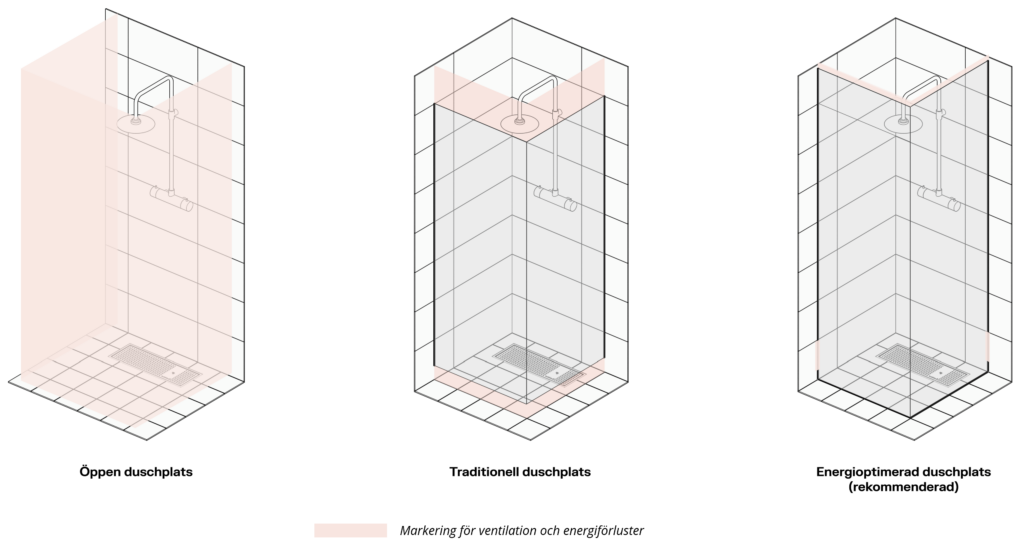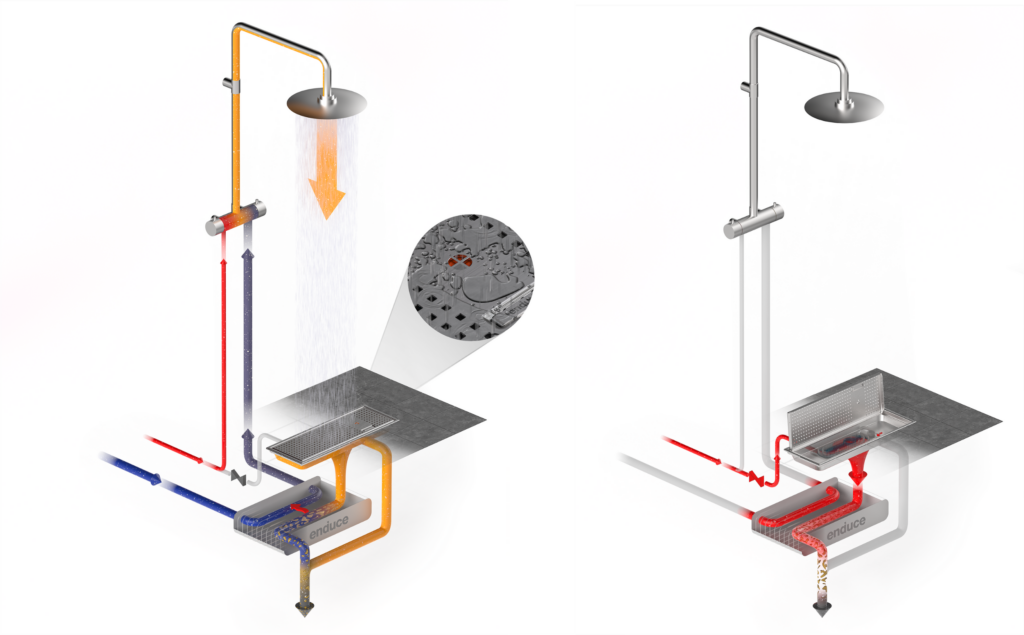How you design the shower area and where you place the shower room ventilation is crucial for the energy efficiency and comfort of the shower experience. We assume standard ventilation in the space around the shower area in the description below.
With an open shower area, without effective shielding, as much as 4 000 watts (W) of shower heat can be lost to the environment. This corresponds to approximately 20 % of the total shower output (when showering at 9 l/min in 39°C shower water and a cold water temperature of 7°C), which means that you will have a less comfortable shower and the possibility to recover the energy in the floor drain is limited.
If the shower area is designed with an effective screen, and correctly placed ventilation, the power losses are instead minimized to the order of 800 W, corresponding to about 4 % of the total shower power, while maintaining a good drying of the space between showers. The improvement provides a high level of comfort and good conditions for efficient energy recovery in the floor drain.
In our value calculation, we define the shower area as follows:

An open shower area lack at least one shower enclosure and/or have the ventilation outlet directly above the shower compartment. In these cases, the shower water evaporates into the surrounding air to an extent that causes a strong cooling effect on both the shower water and the body (up to 4 000 W, compared to the body at rest generating in the order of 80 W of heat). The cooling effect obviously reduces comfort, and increases energy losses when showering.Evaporated water from the open shower area transports the energy to room-temperature surfaces such as walls, floors, bathroom fixtures and ventilation systems, where the water condenses in significant quantities, making surfaces wet and mirrors foggy, resulting in increased soiling and, in the worst case, mould growth. After showering, the moisture slowly evaporates from the surfaces, and the energy transported to the surfaces during showering is transformed into ventilation losses that are difficult to recover.
A traditional shower areawe define as an intermediate between the open low comfort energy consuming shower area described above, and the "optimized" one described below. Depending on the exact design of the shower area, as well as the location and dimensioning of the ventilation in the room, the power losses from the traditional shower area are around 2 800 W corresponding to 14 % of total shower power.
An energy-optimized shower areacontrols air and energy exchange in all directions during showering - greatly reducing evaporative losses from the body and shower space, leading to a very comfortable and energy-efficient shower. A study conducted in the HSB Living Lab research environment in Gothenburg shows that energy loss from shower spaces was reduced by an average of 2,000 W (from about 2,800 W down to about 800 W) when switching from traditional shower enclosure solutions to energy-optimized ones. The optimized shower area provides low moisture load on the bathroom and ventilation system, good conditions for efficient energy recovery in the floor drain, as well as good ventilation of the shower area between showers.
The article was updated on 2024-09-30.

